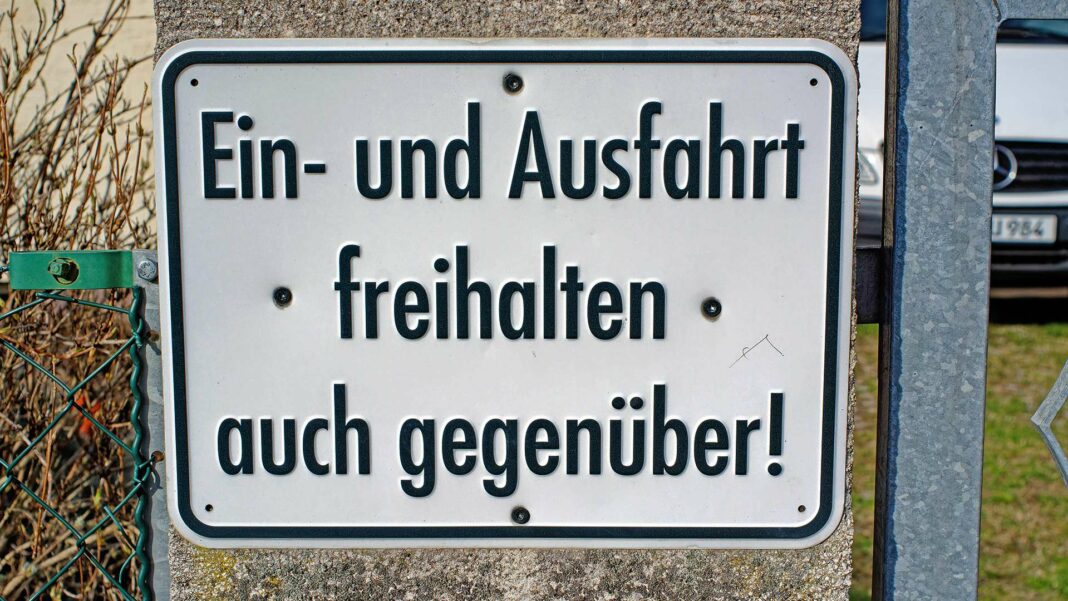Parking regulations in Germany can be confusing, notably regarding the unspoken 3-meter guideline for parking across from driveways. While the StVO does not specify minimum distances, legal interpretations suggest maintaining this distance to avoid obstructing property exits. Drivers should be aware of their vehicle’s width and the potential for towing. Additionally, while signs requesting clearance can be helpful, they lack legal weight. Ultimately, exercising consideration and avoiding potential obstructions is key to good parking etiquette.
Understanding Parking Regulations in Germany
Parking regulations in Germany can be quite intriguing. One area that often causes confusion is the lack of explicit rules regarding the amount of maneuvering space required when parking next to other vehicles. This ambiguity can result in situations where cars become blocked in, leading to frustration for drivers.
However, there is a commonly recognized guideline when it comes to parking across from driveways. While the Road Traffic Regulations (StVO) don’t lay out a specific distance, certain court rulings have suggested adhering to a 3-meter rule.
The 3-Meter Guideline for Driveway Parking
Paragraph 12 of the StVO does not mention a minimum parking distance near driveways. It simply states that parking “in front of property entrances and exits, and on narrow roads opposite them” is prohibited. This leaves many wondering when it becomes too narrow to park across from a driveway.
In some legal decisions, the 3-meter guideline has emerged as a rough standard. But how is this distance determined? According to the Road Traffic Licensing Regulations (StVZO), paragraph 32 assumes that an average vehicle measures about 2.55 meters in width. Adding an additional safety margin of 25 centimeters for unobstructed passage results in a total roadway width of approximately 3.05 meters.
Therefore, knowing your vehicle’s exact width is crucial. The app Carsized can provide precise measurements of your car.
If you park across from a driveway and reduce the roadway width to less than 3.05 meters, it may hinder the property owner’s ability to exit easily. However, rulings on this matter tend to be case-specific, taking into account the degree of obstruction presented.
Moreover, property owners may have the right to tow your vehicle, though they must cover the initial towing costs upfront. Given the uncertainty of whether these costs can be reclaimed from the driver, it’s generally advisable to avoid this risk.
In a notable 1998 ruling by the Administrative Court of Munich, it was established that having to maneuver “two or three times” at a garage exit does not constitute a significant restriction. The expectation is not that the driveway owner can exit in a single move; rather, it’s unreasonable if frequent adjustments and precise steering are required.
A more recent 2017 ruling from the Administrative Court of Mannheim highlighted that a driver parked opposite a driveway cannot always predict how many maneuvers will be needed to exit.
Signs and Their Implications
One challenge with the 3-meter rule is that many drivers are unaware of it, as it is not explicitly defined in the StVO and is not part of driving school curricula. Regulatory authorities are also unlikely to issue fines due to this ambiguity.
For those who own a driveway, it may be beneficial to display a sign requesting that the area be kept clear. This can help inform considerate drivers that parking too close could create difficulties.
It’s important to note that such a sign holds “no legal force” and should be understood merely as a suggestion, avoiding any resemblance to official traffic signage.
Final Thoughts on Parking Etiquette
Despite the existence of the 3-meter guideline, determining when a garage or property exit is considered “blocked” remains a case-by-case decision due to the vagueness of the StVO. Factors like the width of the exit and the length of the vehicle parked nearby also play a role. Emphasizing mutual consideration is crucial; if obstruction seems likely, it’s wiser to refrain from parking there, especially if the property owner has indicated this need with a sign. This approach can help safeguard your vehicle from the scrutiny of irritated neighbors.
